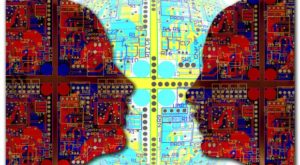Printed Circuit Board Reverse Engineering Process
In the Printed circuit board Reverse engineering process, high speed printed circuit board layout and quality analysis is a conversation topic among engineers, especially in current scenario, the working frequency of printed circuit board becoming higher, such as the normal digital signal processing printed circuit board Reverse engineering’s application frequency can reach 150-200Mhz, and the printed circuit board with CPU operating frequency reach 500Mhz is quite normal already, especially in the communication industry.
Reverse engineering printed circuit board with above Ghz has become prevail. All of these Printed circuit boards are all base upon the multilayer Printed circuit board. And in the multilayer printed circuit board, it is inevitable to use the power supply layer technology during which the design process will become more complicate due to the combination of multiple power supply applications.
What kind of difficulties surround the engineer?
How to define the printed circuit board layer count, which include how many layers should be arranged, and the content on each one of the layer, how to arrange them properly, how many grounding layers the printed circuit board should have, and signal layer etc.
And how to Reverse engineering the power supply block system, such as 3.3V, 2.5V, 5V, 12V, etc. power supply layer separation rationally in the printed circuit board Reverse engineering process and common grounding issue is a critical factor which will determine if the printed circuit board can be stable or not.
How to arrange the decoupling capacitors, use the decoupling capacitor to eliminate the switch noise is a commonly use method, but how to fix the capacitance value? And its location on the PCB board, what kind of capacitor should be applied?


